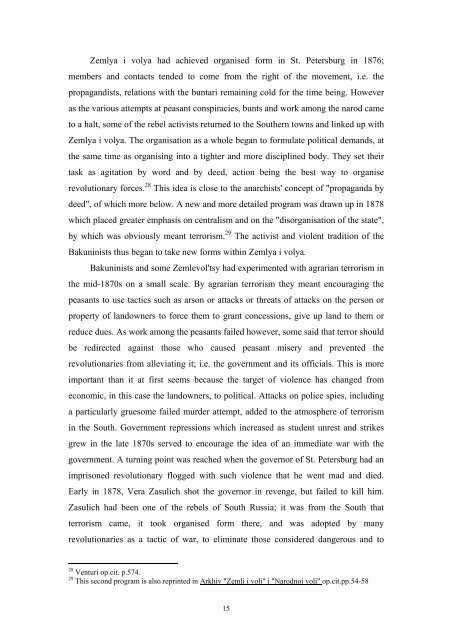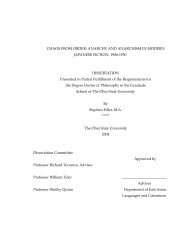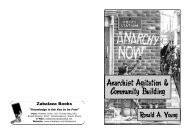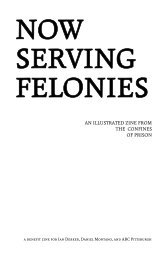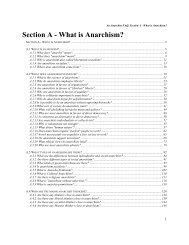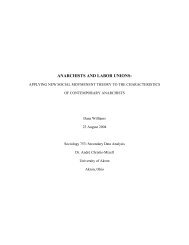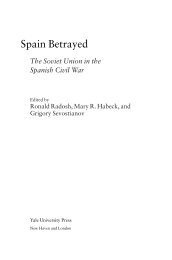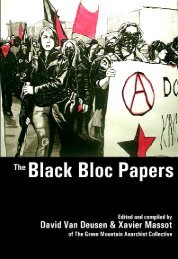Graham Gamblin - Infoshop.org
Graham Gamblin - Infoshop.org
Graham Gamblin - Infoshop.org
You also want an ePaper? Increase the reach of your titles
YUMPU automatically turns print PDFs into web optimized ePapers that Google loves.
Zemlya i volya had achieved <strong>org</strong>anised form in St. Petersburg in 1876;<br />
members and contacts tended to come from the right of the movement, i.e. the<br />
propagandists, relations with the buntari remaining cold for the time being. However<br />
as the various attempts at peasant conspiracies, bunts and work among the narod came<br />
to a halt, some of the rebel activists returned to the Southern towns and linked up with<br />
Zemlya i volya. The <strong>org</strong>anisation as a whole began to formulate political demands, at<br />
the same time as <strong>org</strong>anising into a tighter and more disciplined body. They set their<br />
task as agitation by word and by deed, action being the best way to <strong>org</strong>anise<br />
revolutionary forces. 28 This idea is close to the anarchists' concept of "propaganda by<br />
deed", of which more below. A new and more detailed program was drawn up in 1878<br />
which placed greater emphasis on centralism and on the "dis<strong>org</strong>anisation of the state",<br />
by which was obviously meant terrorism. 29 The activist and violent tradition of the<br />
Bakuninists thus began to take new forms within Zemlya i volya.<br />
Bakuninists and some Zemlevol'tsy had experimented with agrarian terrorism in<br />
the mid-1870s on a small scale. By agrarian terrorism they meant encouraging the<br />
peasants to use tactics such as arson or attacks or threats of attacks on the person or<br />
property of landowners to force them to grant concessions, give up land to them or<br />
reduce dues. As work among the peasants failed however, some said that terror should<br />
be redirected against those who caused peasant misery and prevented the<br />
revolutionaries from alleviating it; i.e. the government and its officials. This is more<br />
important than it at first seems because the target of violence has changed from<br />
economic, in this case the landowners, to political. Attacks on police spies, including<br />
a particularly gruesome failed murder attempt, added to the atmosphere of terrorism<br />
in the South. Government repressions which increased as student unrest and strikes<br />
grew in the late 1870s served to encourage the idea of an immediate war with the<br />
government. A turning point was reached when the governor of St. Petersburg had an<br />
imprisoned revolutionary flogged with such violence that he went mad and died.<br />
Early in 1878, Vera Zasulich shot the governor in revenge, but failed to kill him.<br />
Zasulich had been one of the rebels of South Russia; it was from the South that<br />
terrorism came, it took <strong>org</strong>anised form there, and was adopted by many<br />
revolutionaries as a tactic of war, to eliminate those considered dangerous and to<br />
28 Venturi op.cit. p.574.<br />
29 This second program is also reprinted in Arkhiv "Zemli i voli" i "Narodnoi voli" op.cit.pp.54-58<br />
15


